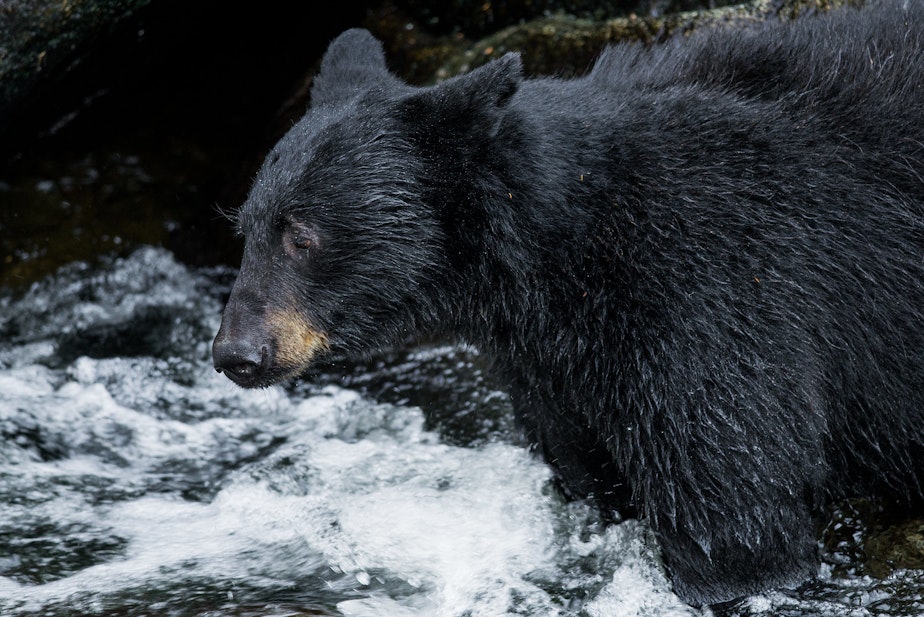Black bear goes island hopping around Puget Sound

In early May, a resident on Orcas Island looked out her window to see a black bear snacking from her bird feeder.
That gave her a start for a simple reason: Black bears don't live on the islands of Puget Sound. Which means it must have made a long swim to end up in her back yard.
Turns out this particular bear was on an island hopping adventure. It was spotted on San Juan, Lopez, Decatur and Blakeley Islands, among others.
The Record's Bill Radke spoke to naturalist Lyanda Haupt, naturalist about what's driving the bear into the water.
Lyanda Haupt Talks Bears
Bill Radke speaking with Lyanda Haupt about bears on Orcas Island.
Interview highlights
Why did the bear swim to the islands?
“It’s looking for the same thing all of us are looking for: a place that has a good habitat, a place to live that has enough food and a place to find a mate that isn’t related to you," Haupt said.
In this case, she said it's a young male that is active and energetic, but may not be looking for a mate quite yet.
“Black bears don’t reproduce until they’re quite mature, at least three to five years and sometimes older,” she said.
“That’s good advice,” Radke said.
“That’s what I tell my daughter,” she said.
How's the bear doing?
"The bear appears to be healthy, just young.
"It’s true that it’s pressing the boundaries of what is typical for us in terms of dispersal of young bears. But the Fish and Wildlife people I have spoken to are not worried about the bear.
"They’re going, ‘Wow, it’s really overcoming some impressive barriers,'" Haupt said.
How to be good co-existers with bears
“It’s not rocket science: 99% of it is us managing our food and our waste properly.
"In the city, that might just mean putting the lid on tight to keep the raccoon from getting in. In bear area, like when we get out towards Snoqualmie, a tight lid is not going to keep a 300-pound male bear out of your garbage. You need to have an actual chain, or better, keep it in the garage or a closed shed.
"If your waste management people come to pick up your garbage in the morning, instead of putting it out at night, just get up early and put it out in the morning. A little inconvenient, but a small price to pay for living in this beautiful place adjacent to wildlife."
Don't feed the birds
"A suet feeder and handfuls of birdseed: That is irresistible [to a bear].
“I hate to say this because people love feeding birds: Feeding birds is something we mostly do for ourselves. It brings birds in so we can admire them and enjoy them.
"But right now birds absolutely do not need extra food. It’s a myth that if you have bird feeders out and you take them away that the birds will starve."
For more information on keeping your home safe from bears, Haupt suggests checking out Washington Fish & Wildlife's site.
Produced for the web by Kara McDermott.





